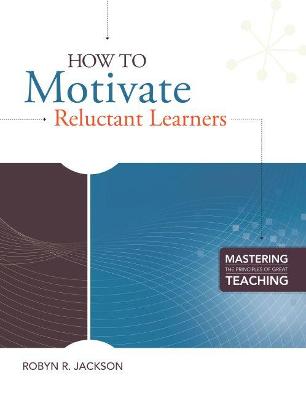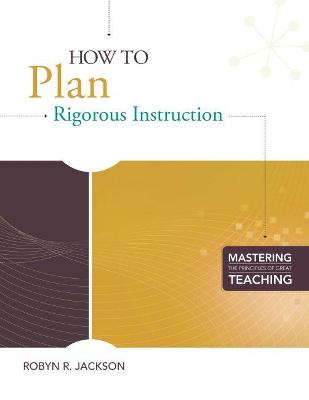Mastering the Principles of Great Teaching
4 total works
What we call ""motivation"" in school is really a decision students make to invest in our classrooms. It's our responsibility to show students the value of investment and guide them toward behaviors that will support learning. In this guide, Robyn R. Jackson takes you step by step through the process of motivating reluctant learners-what great teachers do instead of relying on elaborate rewards systems or creative tricks to reach students who actively or passively resist investing themselves in the classroom. Here, you'll learn how to:
- Identify the classroom investments to ask for by considering the motivated behaviors you most want to see and ensuring that what you're asking for is specific, meaningful, observable, realistic, worth the effort, and small.
- Create a classroom worth investing in by removing ""demotivating"" practice- and procedure-based barriers and giving students more opportunities for autonomy.
- Understand and address students' resistance and respond with instructional strategies that minimize perceived risk and maximize immediate benefits.
- Ask for and shape an investment by reaching out to students in a nonconfrontational way and providing a clear path toward motivated behavior.
- Create a motivation plan that's tailored to the students you teach and designed to be effective in the long run.
If we want all our students to become better thinkers and learners, we must design rigorous learning experiences that go beyond helping them simply master standards.
In this guide, Robyn R. Jackson takes you step by step through the process of planning rigorous instruction-what great teachers do to ensure students have a learning destination that's worth working toward and that the path they take to get there will help them pass the big tests and become engaged learners, effective problem solvers, and critical thinkers. Here, you'll learn how to:
In this guide, Robyn R. Jackson takes you step by step through the process of planning rigorous instruction-what great teachers do to ensure students have a learning destination that's worth working toward and that the path they take to get there will help them pass the big tests and become engaged learners, effective problem solvers, and critical thinkers. Here, you'll learn how to:
- Create a rigorous unit assessment to guide your instruction and ensure standards mastery.
- Select rigorous learning materials by examining the type of thinking you want students to engage in and the type of understanding you want them to acquire.
- Choose rigorous instructional strategies by looking at ways to help students grasp new content and acquire new skills, apply what they are learning in a meaningful way, use thinking processes to synthesize new understandings, and adapt these understandings to new contexts across disciplines.
- Create a rigorous learning unit, tailored to your standards and classroom content, and to the students you teach.
If we want our students to succeed, we cannot afford to leave to chance what happens when they do not learn.In this guide, Robyn R. Jackson and Claire Lambert take you step by step through the process of providing proactive and progressive learning support-what great teachers do to ensure that all students receive the right kind of assistance and to get those who are struggling back on track before they get frustrated and give up. Here, you'll learn how to:
Every teacher can become a master teacher with the right kind of practice and support. Each how-to guide in the Mastering the Principles of Great Teaching series focuses on one of the seven mastery principles introduced in Robyn R. Jackson's best-selling Never Work Harder Than Your Students and Other Principles of Great Teaching. The guides' self-assessments, worksheets, planning templates, process outlines, checklists, links to online resources, suggested activities, and prompts for reflection help teachers of all experience levels apply the principles to address everyday classroom challenges and build their overall mastery mindset.
- Support students before instruction through acceleration practices, including activating background knowledge, providing advance organizers, and focusing on key vocabulary.
- Support students during instruction by distinguishing between productive and destructive struggle, establishing ""red flags"" to alert you when a student's learning is headed off course, and delivering targeted interventions that quickly put struggling students back on the path to mastery.
- Support students after instruction by providing appropriate remediation for the few students who have not achieved mastery.
- Create a comprehensive, progressive support plan tailored to your classroom content and the students you teach.
Every teacher can become a master teacher with the right kind of practice and support. Each how-to guide in the Mastering the Principles of Great Teaching series focuses on one of the seven mastery principles introduced in Robyn R. Jackson's best-selling Never Work Harder Than Your Students and Other Principles of Great Teaching. The guides' self-assessments, worksheets, planning templates, process outlines, checklists, links to online resources, suggested activities, and prompts for reflection help teachers of all experience levels apply the principles to address everyday classroom challenges and build their overall mastery mindset.
How to Support Struggling Students: Mastering the Principles of Great Teaching Series
by Robyn R. Jackson and Claire Lambert
Published 1 January 2010



